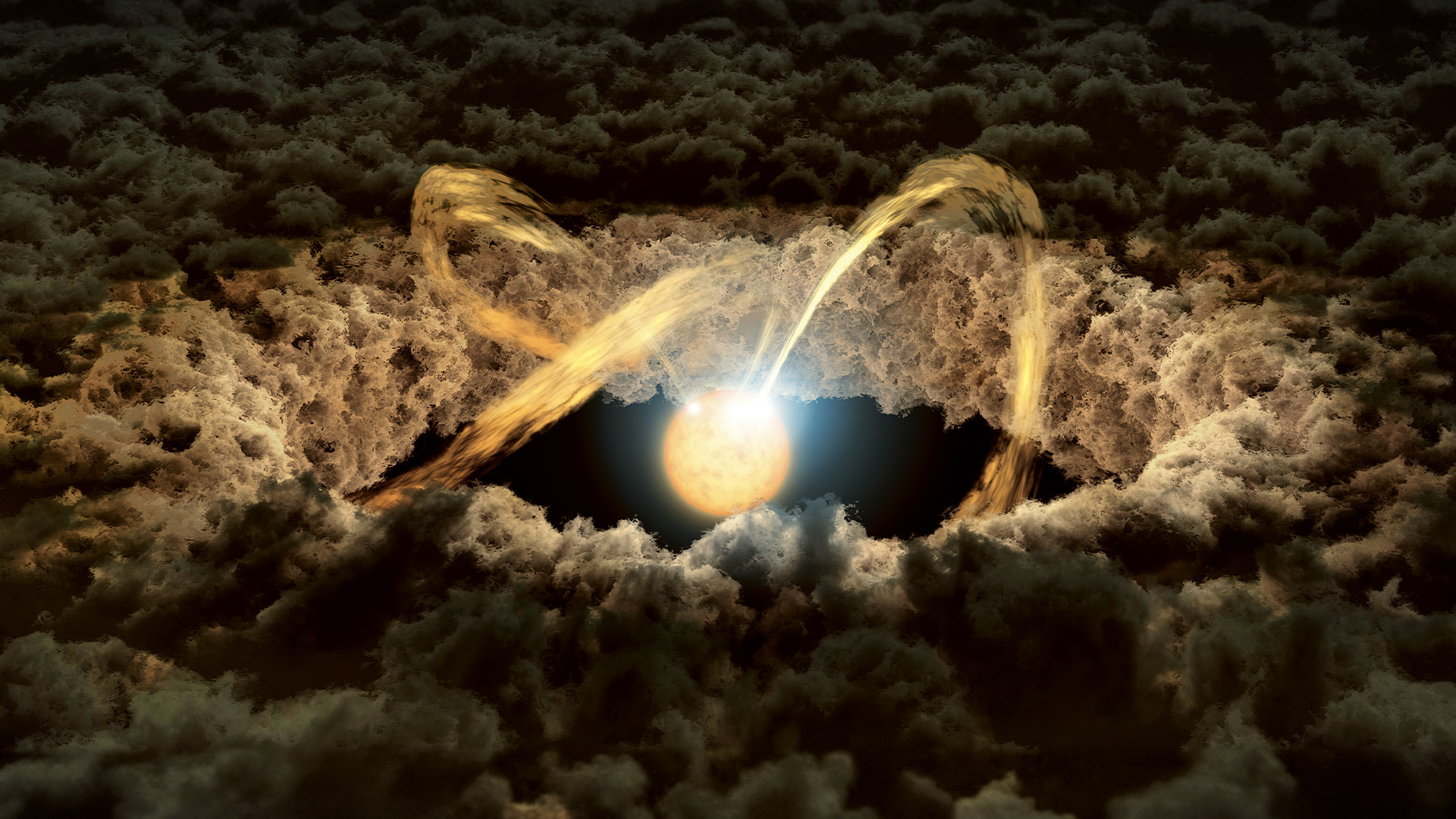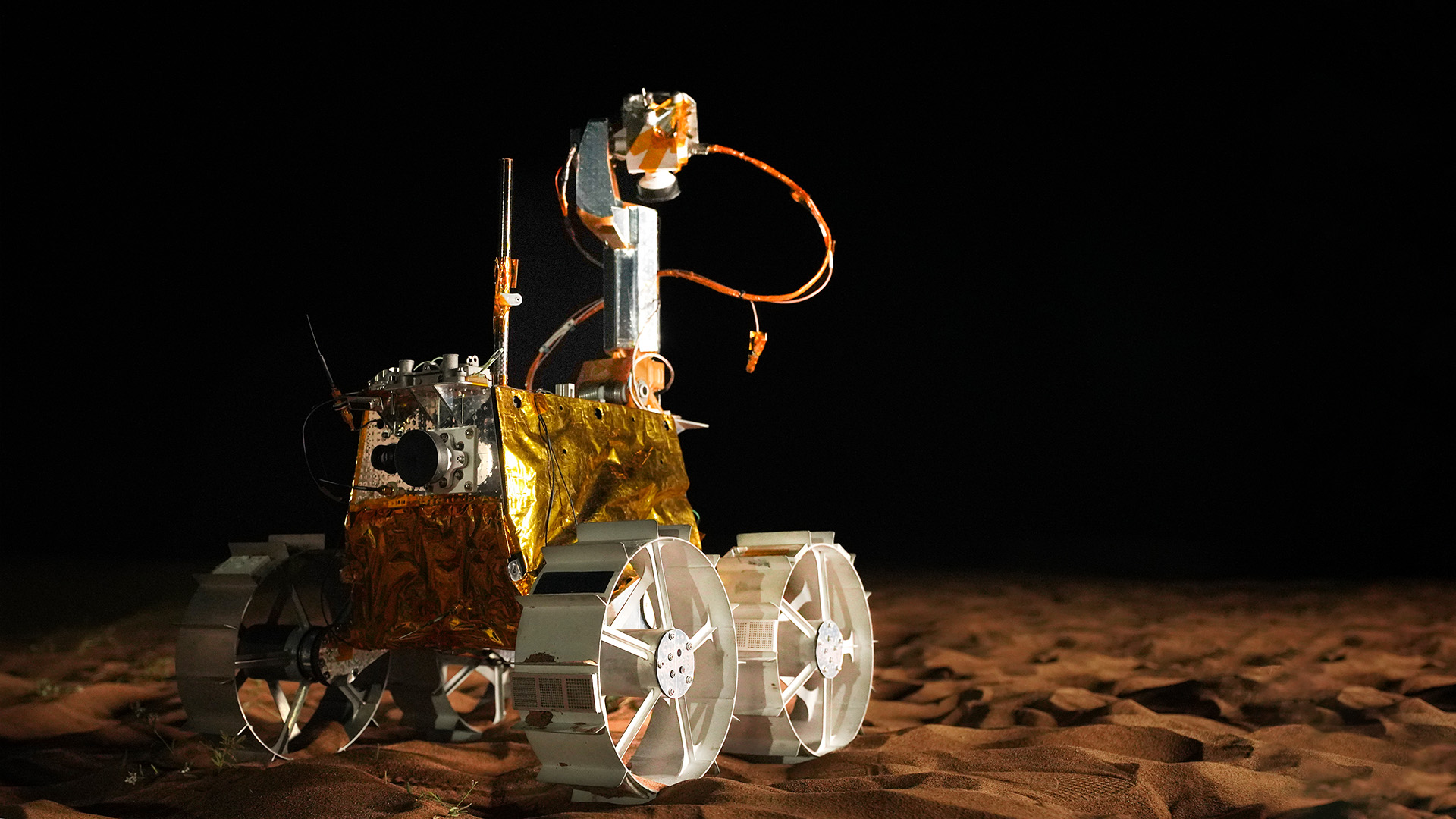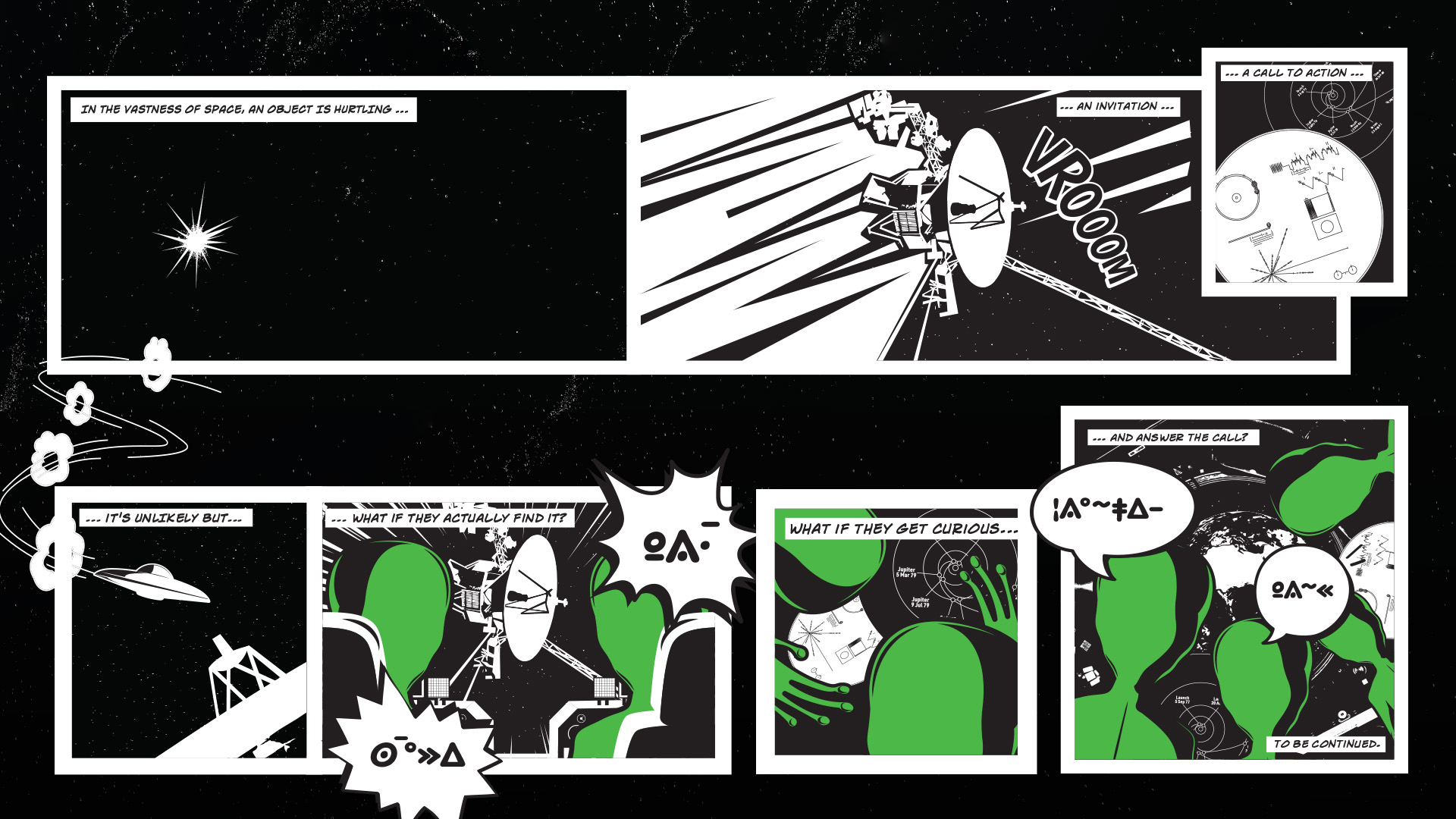Tech could someday let people even in dry climates
get clean water straight from the atmosphere›››

In the past few decades there has been a substantial leap in our understanding of how our solar system formed and how the planets came to be in the positions we see today.
Indeed, a bird’s eye view of our solar system reveals a number of defining characteristics that intrigue scientists. The inner part of our solar system is dominated by small “rocky” planets including Earth. As we move out we encounter the gas and ice giants. Jupiter and Saturn are mainly composed of hydrogen and helium (similar to the sun’s average composition), while the ice giants Uranus and Neptune show a high concentration of ices, or what scientists tend to call “volatiles.”
Nearly 4.6 billion years ago, a rotating nebula started to gravitationally collapse on itself, leading to concentration of materials in the center.
When seen from above, all planets orbit around the sun in a counter-clockwise orientation and in nearly circular orbits. Furthermore, almost all planets rotate around themselves from west to east, in what we call “prograde” rotation. Any valid scientific theory or a model for the formation of our solar system needs to address these collective properties of our planetary system. Planets also host a vast collection of moons: Small planets have few or no moons while larger planets have tens of moons on average. However, there are more pieces to the puzzle of our solar system!
As we move beyond Mars to Jupiter, we encounter small bodies that similarly orbit the sun, called the asteroid belt. And if we continue farther out beyond Neptune, we encounter an even larger collection of small bodies in what is called the Kuiper belt.
Scientists have built a solid model for how our solar system formed from a cloud of gas and cosmic dust called a nebula. Nearly 4.6 billion years ago, a rotating nebula started to gravitationally collapse on itself, leading to concentration of materials in the center. As gravity led to an increase in matter toward the center of the nebula, more grains and solid materials in that area collided and temperatures rose in the center of the nebula.

The International Astronomical Union has named an asteroid after Mohammed Ramy El-Maarry, director of Khalifa University’s Space and Planetary Science Center. Earlier known as 2002 CZ, it is now (357148) El-Maarry.
The hot center is where our sun was born. Furthermore, as mass concentrated in the center, the rotating nebula started to spin much faster, leading to a shift from a somewhat spherical cloud to a structure that would eventually become the “protoplanetary disk.”
In this disk, materials continued to merge with each other, forming larger blocks. The variations in temperature within the rotating disk are the main reason planets have different compositions. In particular, the inner part of the disk was too hot for ices and other volatiles to condense from a gaseous state into a solid state, so planets in the inner system are relatively devoid of such volatiles. We also know now that the planets orbit around the sun in the same direction because this was the direction of the original nebula’s rotation.
Small bodies are the remnants of this complex process. They are the spare “LEGO” parts of our solar system. When we study the asteroids, we gain more information about the physical and chemical conditions of the inner solar system, including Earth. Similarly, when we study ice-rich small bodies in the Kuiper belt and beyond, we gain more information about the conditions at the outer edges of the early nebula. The great thing about small bodies is that rather than travel long distances to study them, we can rely on them coming close to Earth’s backyard. But how does this happen?
Large planets, particularly Jupiter, have a massive gravity that occasionally pushes small bodies in the asteroid belt toward the inner solar system.
This creates the family of near-Earth asteroids that have been visited by numerous space missions. Such bodies may even penetrate our atmosphere and land on Earth as meteorites.
Small bodies can also offer viable economic prospects in the near future given the vast wealth of precious metals and ores they contain.
Neptune has a similar, yet weaker, effect and can attract bodies from the Kuiper belt, shifting their orbits inward till they get captured by the outer planets as moons, or upon encountering Jupiter in their journey inward undergo a shift in their orbit allowing them to visit the inner solar system as comets. These ice-rich bodies allow us to study the outer solar system without needing to go there. When these comets enter the inner solar system, their near-surface ice may turn from a solid to a gas state, lifting surface dust along the way and forming a bright “coma” around the body that can aid in its viewing. Scientists can use remote sensing techniques to measure the composition of the ices.
Small bodies are essential parts of the puzzle to help us better understand our solar system. Small bodies can also offer viable economic prospects in the near future given the vast wealth of precious metals and ores they contain. Near-Earth objects can also pose threats to human civilization if they are large enough and their orbits put them in a collision course with Earth. As such they are a target of planetary defense programs and constant monitoring by Earth-based telescopes. So don’t expect our interest in small bodies to dwindle any time soon.
Mohamed Ramy El-Maarry received his Ph.D. from Goettingen University in Germany. He is an associate professor of planetary geology at Khalifa University’s Department of Earth Sciences and the director of KU’s Space & Planetary Science Center.



